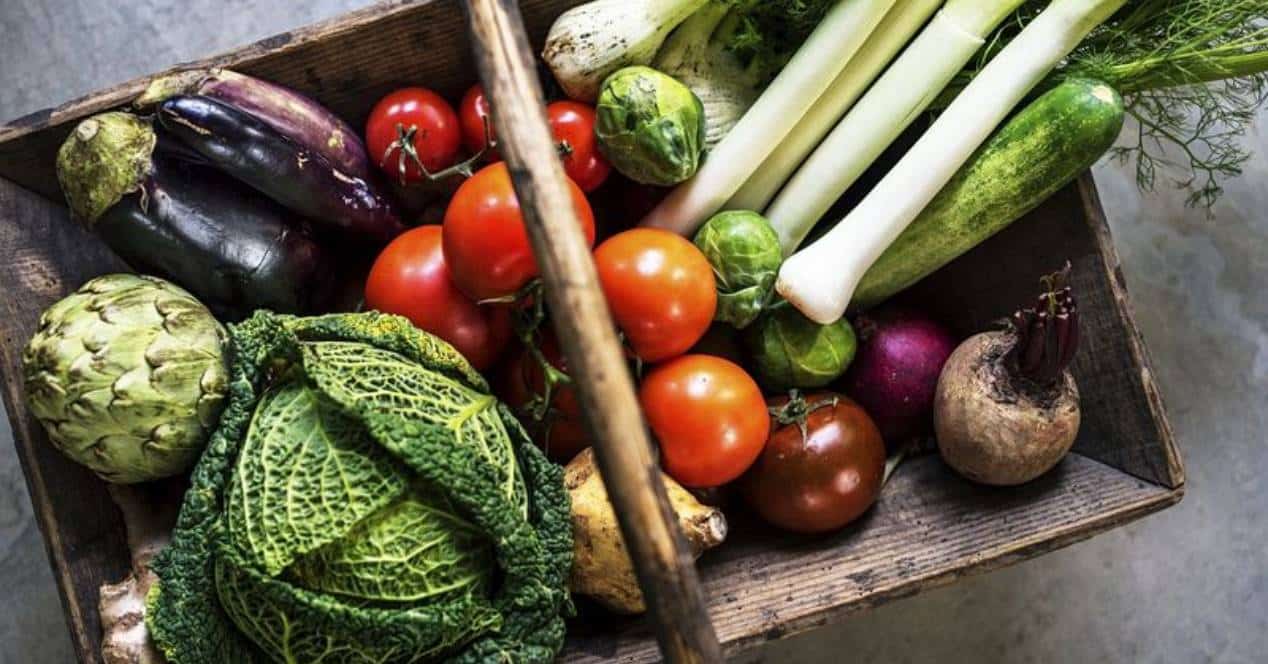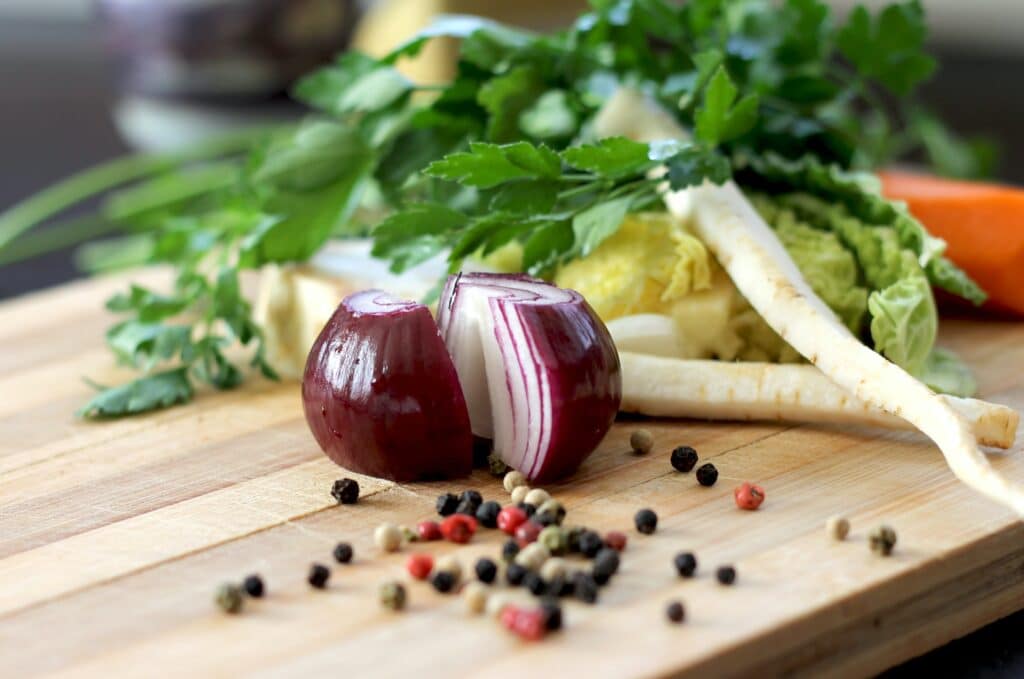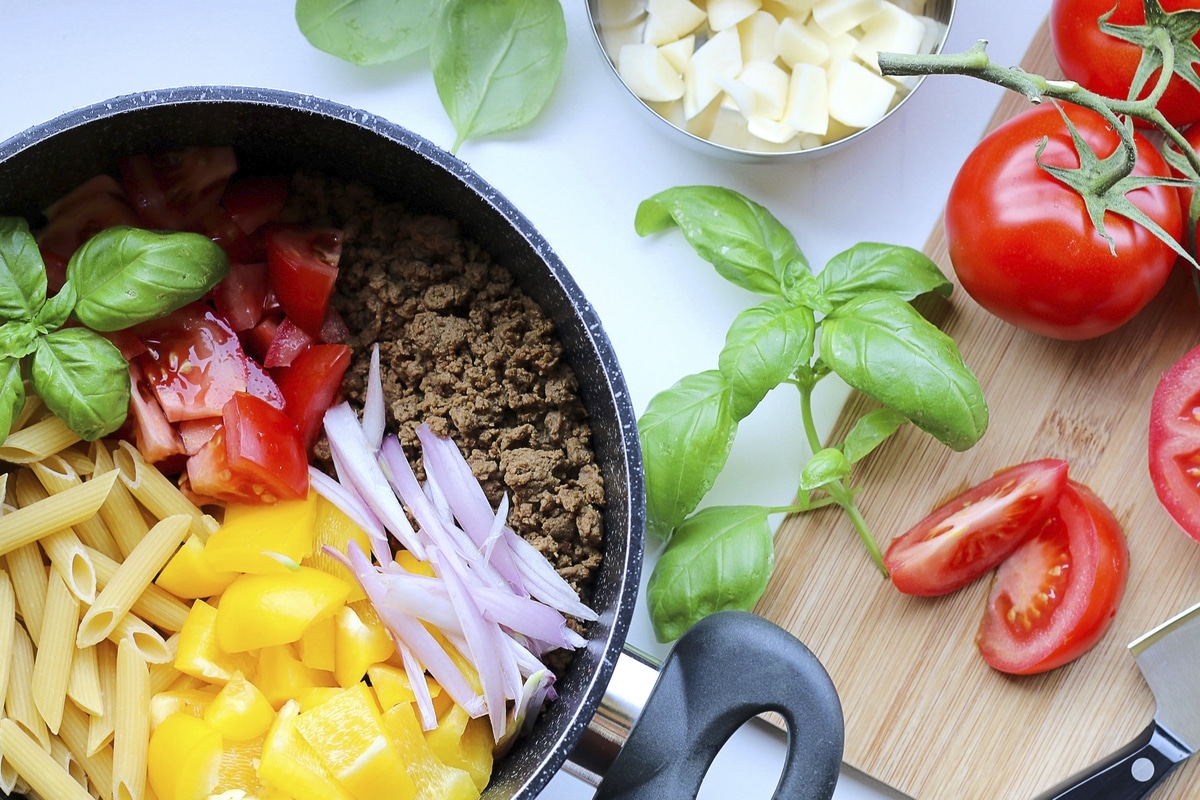
The raw diet (raw food) has been around since the XNUMXth century, but has gained popularity in recent years. Its practitioners believe that consuming mostly raw foods is ideal for human health and has many benefits, including weight loss and better overall health.
However, health experts warn that eating a primarily raw diet can have negative health consequences.
How is it done?
The raw food diet raw food, raw veganism or raw veganism, consists mostly or entirely of raw and unprocessed foods.
A food is considered raw if it has never been heated above 40 to 48°C. It must also not be refined, pasteurized, treated with pesticides, or processed in any other way. Instead, the diet allows for several alternative preparation methods, including juicing, smoothies, dehydrated, soaking, and sprouting.
Like veganism, the raw food diet generally is plant based and consists mainly of fruits, vegetables, nuts and seeds. Although most raw food diets are plant-based, some people also eat eggs crudes and products dairy. Less commonly, they may also include fish y meat raw.
Also, taking supplements on the raw food diet is normally discouraged. Proponents often claim that the diet will give you all the nutrients you need. Supporters also believe that cooking food is detrimental to human health because it destroys the natural enzymes in food, reduces its nutrient content, and reduces the "life force" that they believe exists in all raw or "live" foods.
People follow the raw food diet for the benefits they believe it has, including weight loss, improved vitality, increased energy, improvement in chronic disease, improved overall health, and reduced Impact on the environment.
What is eaten?
To follow the raw food diet, we will make sure that at least 75% of the food we eat is raw. Most raw food diets consist primarily of fruits, vegetables, nuts, and seeds. Grains and legumes are normally also allowed, but generally must be soaked or sprouted before eating.
Allowed foods
- all fresh fruits
- all raw vegetables
- Raw seeds
- Raw, sprouted or soaked cereals and legumes
- Nuts
- Nut milks
- Raw Nut Butters
- Cold-pressed olive and coconut oils
- Fermented foods like kimchi and sauerkraut
- Seaweed
- Coles
- Raw eggs or dairy
- Raw meat or fish
Although cooked foods are not allowed, some raw eaters get around this limitation by using techniques like soaking, sprouting, dehydrating, fermenting, juicing, and blending to add variety to their meal plan. The use of a blender high speed for several minutes can increase the temperature of foods such as gazpacho and raw soup without exceeding 48ºC. The dehydration of fruits and vegetables has a similar effect, making it a reference method for preparing foods such as "burgers" and "pizzas" from raw vegetables.
The Smoothies They're a great breakfast option on a raw food diet, as they're packed with fruit, nuts, seeds, and nut butter. We can mix it by changing the ingredients in the shakes. The salads and the bowls are basic recipes for lunches and dinners. They are a great way to incorporate multiple food groups: vegetables, grains, legumes, and sources of healthy fats like avocado, nut-based dressings, and olive oil.
A raw food diet is simpler when you use unprocessed foods in their whole, raw form. Processed foods can be eliminated in some variations of a raw food diet, but if they're allowed, you'll need to pay close attention to product labels. Canned foods are also not raw.
Foods to avoid
- Fruits, vegetables, meats and cooked cereals
- baked foods
- Nuts and toasted seeds
- refined oils
- Table salt
- Refined sugars and flour
- Pasteurized juices and dairy
- Coffee and tea
- Alcohol
- Pasta
- Pastry
- Chips
- Other processed foods and snacks

Raw vs Cooked Food
Raw eaters believe that eating most or all foods raw is ideal for human health. However, like many of the fundamental beliefs behind the raw food diet, this idea is not supported by science. In fact, research shows that both cooked and raw foods have health benefits.
One of the main reasons the raw food diet discourages cooking is because of the belief that cooking destroys the natural enzymes in food. Proponents of the diet believe that these enzymes are vital to human health and digestion.
High temperatures cause most enzymes to denature, that is, break down or change shape. However, many enzymes are denatured in the acidic environment of the stomach anyway. In fact, the body already produces its own enzymes to facilitate chemical processes, including digestion and energy production.
Another core belief behind the raw food diet is that cooking destroys nutrient content of food. In fact, cooking can decrease certain nutrients in food, especially water-soluble ones like vitamin C and B vitamins. However, cooking actually increases the availability of other nutrients and antioxidants, like lycopene and beta-carotene.
cooking too helps inactivate or destroy some harmful compounds in food. For example, cooking grains and legumes reduces lectins and phytic acid. In large amounts, these can prevent the body from absorbing minerals. Additionally, cooking also kills harmful bacteria.
For these reasons, it is important to eat a variety of raw and cooked foods.
Advantages
A raw diet has some positive points. Mainly, it is very high in fresh fruits and vegetables. It also incorporates other foods rich in nutrients and fiber. To its credit, it limits the intake of foods that are known to contribute to poor health if eaten in excess, such as processed junk food and added sugar.
Furthermore, a raw food diet almost guarantees pérdida peso because it is low in calories. When someone switches from a primarily cooked diet to a primarily raw diet, their calorie intake is likely to drop dramatically. Additionally, studies have consistently found that the raw food diet is associated with having less body fat.
Risks
Some people may not be able to eat enough raw foods to meet their daily caloric needs. This is partly because fruits and vegetables, while healthy, simply don't provide enough calories or protein to make up the bulk of the diet.
Additionally, cooking increases the digestibility of food, making it easier for the body to obtain calories and nutrients from it. In some cases, the body gets significantly fewer calories from a food if it is raw. Cooking also increases the amount of certain nutrients and antioxidants that the body absorbs.
Finally, raw diets tend to be nutritionally unbalanced because they must be composed mainly of fats or fruits to satisfy caloric needs. This means that raw food diets can be deficient not only in calories, but also in some vitamins, minerals, and protein.
One study found that people who followed a raw diet for long periods of time had a increased risk of dental erosion. In addition, 70% of the women who followed the diet experienced irregularities in your menstrual cycle. And nearly a third of the women developed amenorrhea, meaning they stopped menstruating, which may be a consequence of low body weight.

Is it safe?
In the short term, the raw food diet is not likely to pose any major health problems. However, you may develop problems if you follow the diet long term.
A mostly raw diet makes it difficult to get enough calories, protein, and certain vitamins and minerals. Some people may not be able to get enough calories from this diet. Evidence also shows that the higher the proportion of raw foods in the diet, the greater the risk of negative effects.
Unless we take supplements, we can develop problems due to insufficient nutrients over time as the body's stores of vitamins and minerals are depleted. Vitamin B12 and vitamin D are particularly difficult to obtain in raw vegan diets.
However, even nutritional supplements cannot make up for the lack of calories and protein in the diet. Also, the risk of being exposed to a foodborne illness increases when you eat raw foods. This is especially true if raw dairy, eggs, or meat are part of the diet. Nutrition experts always recommend that people only eat them when they are fully cooked or pasteurized.
Lastly, a raw food diet can be difficult to maintain for a number of reasons. Food options are very limited and avoiding cooked foods makes it difficult to go out to eat or eat with friends. Avoiding cooked foods also means that food preparation methods are very limited, so a raw food diet can become boring. Many people also find it undesirable to eat only cold foods.
Lastly, it can be expensive to buy so much fresh organic produce, not to mention the time it takes to plan and prepare.
Menu example
A raw food diet follows a restrictive eating pattern. Although it is not a menu designed by a specialist, nor focused on all types of people, we offer an example to get an idea of the limitations of a raw food diet:
- Day 1: Green smoothie; Greek salad; lettuce tacos with “sour cream” based on cashew nuts.
- Day 2: Green juice, almonds, orange; mung bean salad; dehydrated vegetable patties wrapped in lettuce.
- Day 3: Fruit with date syrup and hemp seeds; vegetable dish with cashew-based onion sauce; sprouted quinoa with vegetables.
- Day 4: Muesli, blueberries, almond butter; red pepper and tomato gazpacho; raw pad thai.
- Day 5: Strawberry Banana Chia Pudding; cucumber vegetable rolls; mushroom pizza.
- Day 6: Berry smoothie; vegetable tray and hummus; cauliflower rice without frying.
- Day 7: Nice banana cream; raw “sushi” (without rice); zucchini noodles with cashew alfredo sauce.